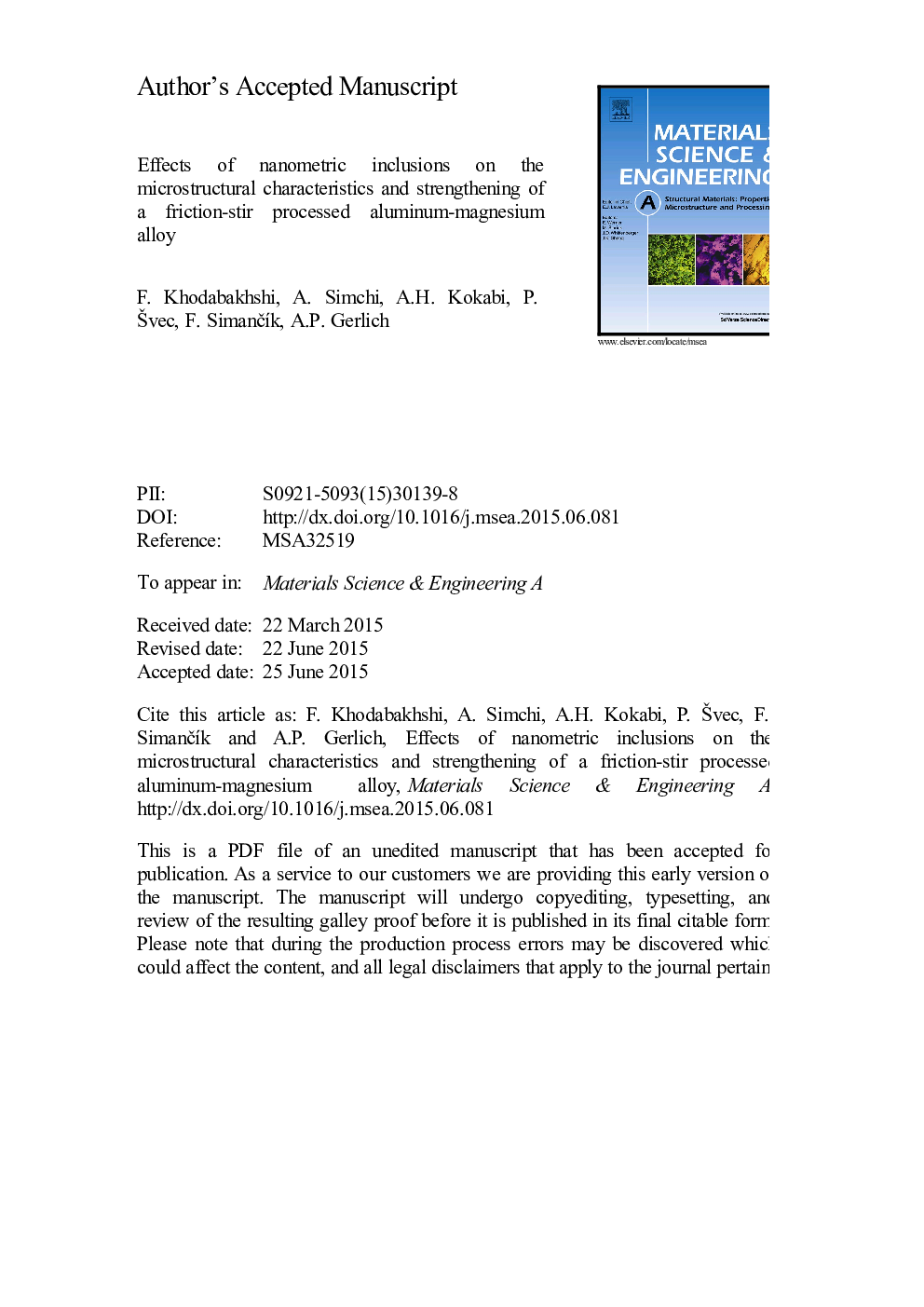| Article ID | Journal | Published Year | Pages | File Type |
|---|---|---|---|---|
| 7977297 | Materials Science and Engineering: A | 2015 | 40 Pages |
Abstract
An aluminum-magnesium alloy was friction-stir processed in the presence of TiO2 nanoparticles which were pre-placed in a groove on the surface to produce a composite. Field emission-scanning and transmission electron microscopy studies show that solid state chemical reactions occur between the Al-Mg matrix and the ceramic particles upon the severe plastic deformation process. The microstructure of the aluminum alloy consists of a coarse grain structure, large complex (Fe,Mn,Cr)3SiAl12 particles, and small Mg2Si precipitates. After friction stir processing, a deformed grain structure containing rod-like Al-Fe-Mn-Si precipitates is attained, along with cuboidal (~100Â nm) Cr2 precipitates and spherical (~100 and 5Â nm) Mg2Si particles. In the presence of TiO2 nanoparticles, magnesium oxide (MgO) and titanium aluminide (Al3Ti) nanophases are formed. It is shown that these microstructural modifications lead to a significant enhancement in the hardness and tensile strength of the aluminum alloy. The relationship between the microstructural evolution and mechanical properties and the role of hard inclusions are presented and discussed. An analysis based on strengthening models indicates that the yield strength of the nanocomposite is mainly controlled by dislocations and grain boundaries rather than the nano-scale inclusions.
Related Topics
Physical Sciences and Engineering
Materials Science
Materials Science (General)
Authors
F. Khodabakhshi, A. Simchi, A.H. Kokabi, P. Å vec, F. SimanÄÃk, A.P. Gerlich,
